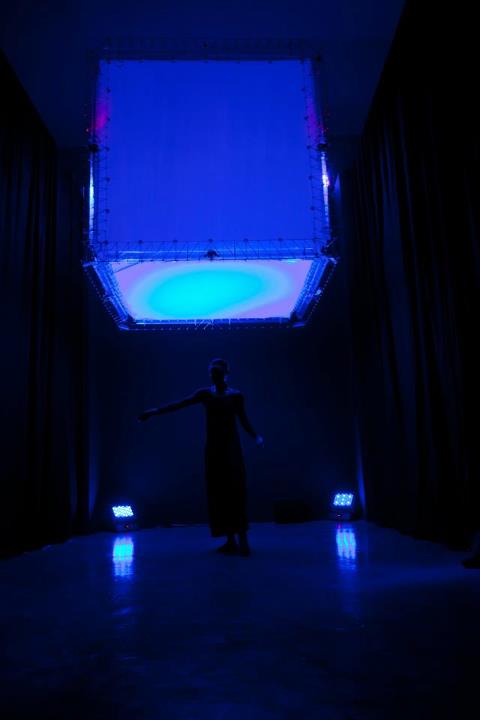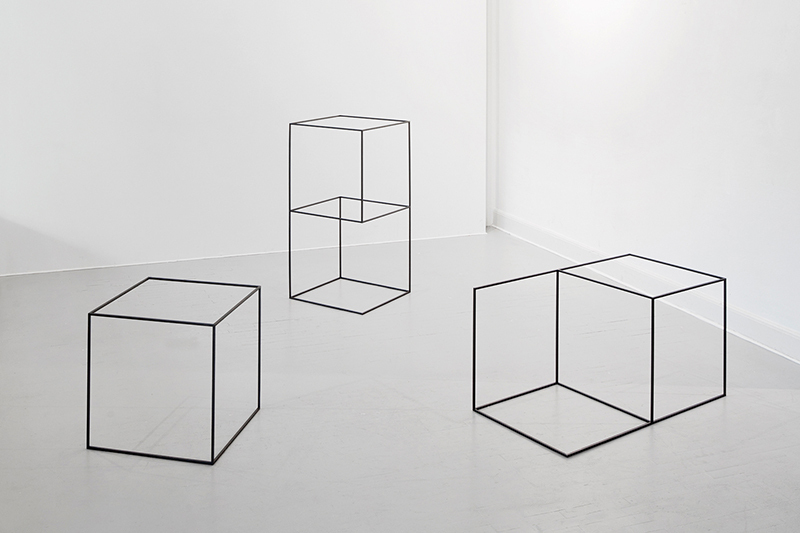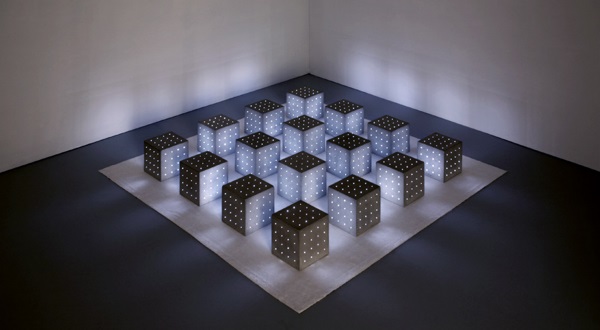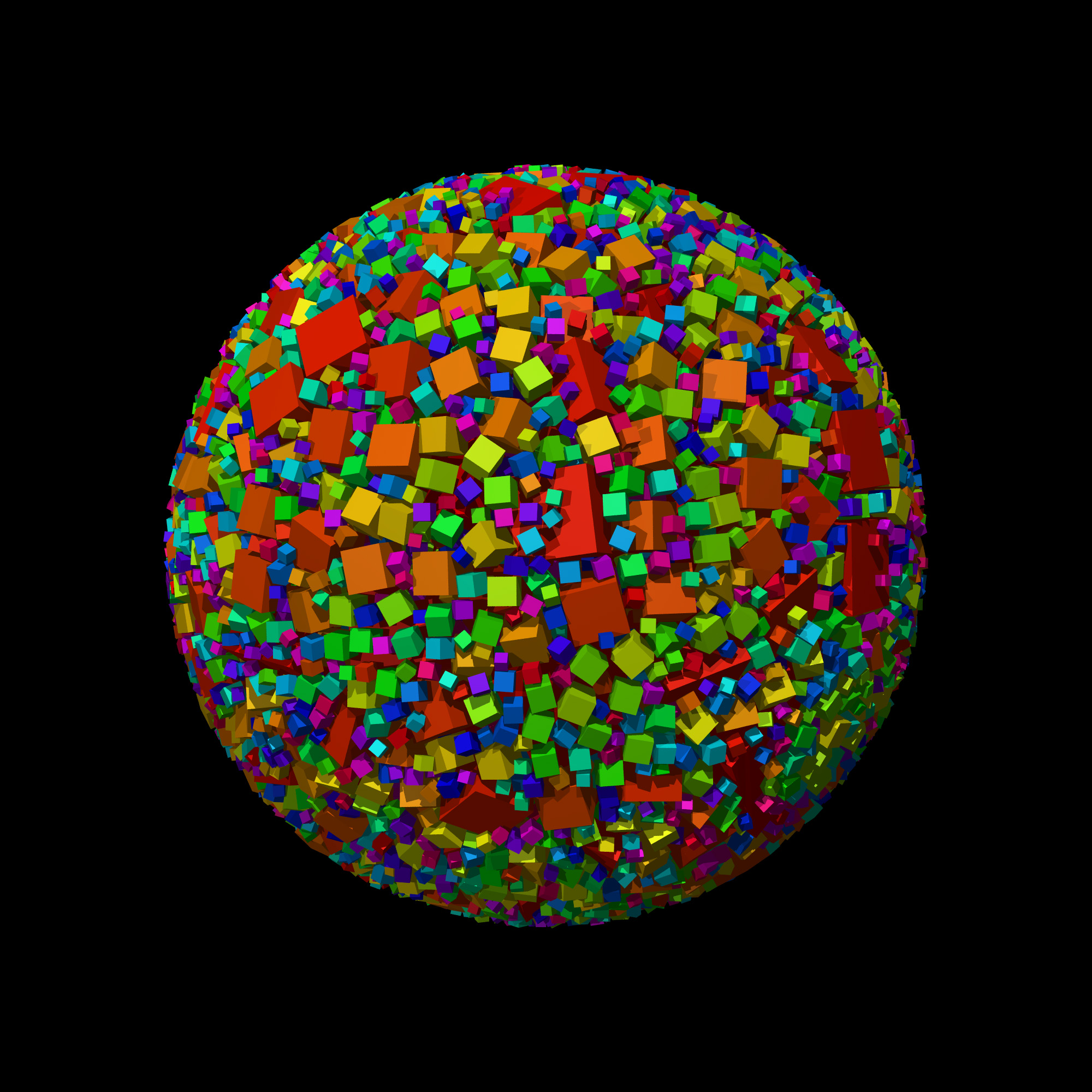


AZC
Trampoline Rebondissant
La conception est formée de modules gonflables, comme des bouées de sauvetage géantes, de 30 mètres de diamètre. Dans la partie centrale de chaque anneau, un treillis trampoline est tendu. Les bouées flottantes, fabriquées en membrane PVC, sont attachées entre elles par des cordes pour former un ensemble stable et autoportant. Chaque module sous tension – rempli de 3700 mètres cubes d’air – se développe dans l’espace avec une forme en arc. Conçu entièrement en matériaux légers, le projet traverse la seine en un point précis ; il peut bien entendu s’adapter à des dimensions plus ou moins importantes sur d’autres sites. Située en relation directe avec la tour eiffel, l’installation devient le symbole d’une architecture éphémère conçue pour offrir une expérience unique : une vue sur tout Paris.

NXI GESTATIO: NICOLAS REEVES, DAVID ST-ONGE & GHISLAINE DOTÉ
Paradoxal Sleep
File Festival
O projeto “Paradoxal Sleep” integra uma série de obras na qual grandes cubos robotizados, medindo 2,25 m3, funcionam como estruturas flutuantes usadas como plataformas para vários projetos multimídia e performances. No FILE 2012, a equipe da NXI GESTATIO apresentará um único cubo que irá se mover nos espaços expositivos. O cubo reajustará constantemente sua posição medindo a distância entre as paredes ao redor.
.
The “Paradoxal Sleep” project integrates a series of works in which large robotic cubes, measuring 2.25 m3, function as floating structures used as platforms for various multimedia projects and performances. At FILE 2012, the NXI GESTATIO team will present a single cube that will move in the exhibition spaces. The cube will constantly readjust its position by measuring the distance between the surrounding walls.

Tomas SARACENO
توماس ساراسينو
托马斯·萨拉切诺
トマスサラセーノ
Space elevator / Spark
Black polyester rope, plastic cable ties, metal frame.
Having studied as an architect, Tomas Saraceno incorporates physics, engineering, and aeronautics into his interactive and evolving artistic structures. Using arachnology, or the study of spiders, to create structures that suggest alternative ways of living, he employs tridimensional webs to better understand how unique building blocks create distinct forms. Saraceno places spiders in cubic frames and leaves them to spin webs, rotating the cubes at various intervals to introduce elements of freedom

Ramy Fischler & Cyril Teste
Exformation, an interactive installation inspired by the concept of “exformation,” was developed for a composition by Jesper Nordin performed by the Diotima string quartet and combines musical, luminous and colorimetric scores. Around the musicians, positioned on a technically equipped stage, three aluminium-edged cubes with LEDs mounted on circular rails move and angle their light in keeping with an algorithmic programme based on analysis of the spectrum, timbre and intensity of the music. This sensitive object becomes a total composition, a poetic, digital entity responding to the work played at its centre.

JULIAN OLIVER
朱利安·奥利弗
줄리안 올리버
ג’וליאן אוליבר
ジュリアン・オリバー
Джулиан Оливер
Levelhead
FILE FESTIVAL
LevelHead is a spatial memory game. The game takes its inspiration from the “Philosphical Toys” of 18th/19th century Europe and the memory systems (“memory loci”) of the ancient Greeks. levelHead uses a hand-held solid-plastic cube as its only interface. On-screen it appears that each face of the cube contains a little room, each of which are logically connected by doors. In one of these rooms is a character. By tilting the cube, the player directs this character from room to room in an effort to find the exit. Some doors lead nowhere and will send the character back to the room they started in, a trick designed to challenge the player’s spatial memory. Which doors belong to which rooms? There are three cubes (levels) in all, each of them connected by a single door. Players have as a goal to move the character from room to room, cube to cube, in an attempt to find the final exit door of all three cubes. If this door is found, the character will appear to leave the cube, walk across the table surface and vanish. Then the game starts over.

Jessica Eaton
ジェシカ·イートン
杰西卡·伊顿
polytopes
Jessica Eaton’s photographs dissect chemical and optical phenomena, the materiality of film, and the language of light itself. Eaton came to international acclaim through her Cubes for Albers and LeWitt (commonly referred to by the acronym cfaal)—a series of vibrant photographs that deconstruct her studio practice. Like the majority of Eaton’s works, these optically charged images are made by taking multiple in-camera exposures of common studio supplies. Through her abundant use of traditional analog photography practices—such as colour-separation filtering and in-camera masking—Eaton imbues her large-format images with an aesthetic more reminiscent of the paintings and drawings of hard-edge geometric abstraction than the photographs of traditional studio work.

arata isozaki
أراتا إيسوزاكي
이소자키 아라타
矶崎新
АРАТА ИСОДЗАКИ
qatar convention center
Arata Isozaki’s initial concept was based on the holy Islamic Sidra Tree, which symbolizes the end of the seventh heaven. Huge steel columns create a tree-like appearance and an illusion of two trees supporting the roof canopy. The columns of the building grow from two concrete bases along the façade and divide into four branches. These have octagonal cubes as structural cores.

Lee Griggs
cgi masks
Madrid-based 3D artist Lee Griggs created some fascinating topographical illustrations using 3D animation and rendering software Maya Xgen and Arnold. Each piece is comprised of countless >spheres, cylinders, or cubes that have been extruded and colored to create images reminiscent of ocean floors, bacterial growth, or even weather patterns.


Katharina Roters
hungarian cubes


JOHN MCCRACKEN
Джон Мак-Кракен
约翰·麦克拉肯
ジョン·マクラッケン
Star, Infinite, Dimension, and Electron
“The geometric forms McCracken employed were typically built from straight lines: cubes, rectangular slabs and rods, stepped or quadrilateral pyramids, post-and-lintel structures and, most memorably, tall planks that lean against the wall. Usually, the form is painted in sprayed lacquer, which does not reveal the artist’s hand. An industrial look is belied by sensuous color.His palette included bubble-gum pink, lemon yellow, deep sapphire and ebony, usually applied as a monochrome. Sometimes an application of multiple colors marbleizes or runs down the sculpture’s surface, like a molten lava flow. He also made objects of softly stained wood or, in recent years, highly polished bronze and reflective stainless steel.Embracing formal impurity at a time when purity was highly prized, the works embody perceptual and philosophical conundrums. The colored planks stand on the floor like sculptures; rely on the wall for support like paintings; and, bridging both floor and wall, define architectural space. Their shape is resolutely linear, but the point at which the line assumes the dimensional properties of a shape is indefinable.” Christopher Knight

DAVID BERKOVITZ
The Tree

PAUL BOURKE
bsphere
10,000 cubes